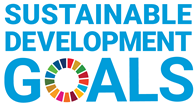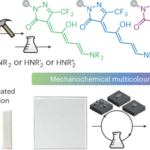2023-01-23 イリノイ大学アーバナ・シャンペーン校
米国農務省の全国統計によると、不耕起と保全耕起は増加傾向にあり、トウモロコシと大豆農家の4分の3以上が土壌侵食を減らし、土壌構造を維持し、燃料を節約するためにこれらの方法を選択しています。しかし、これらの推定は主に農家の自己申告に基づいており、5年に1度しか集計されないため、正確性に欠ける可能性があります。
新しい研究では、イリノイ大学の科学者が、地上、空中、衛星画像を統合して、耕作地をリアルタイムで正確にマッピングする方法を実証しています。
「私たちは、リモートセンシングによって、費用対効果の高い方法で、地域スケールの耕作情報を定量化できることを示しました。この現場レベルの情報は、生産者の管理方法をサポートするだけでなく、農業生態系のモデリングをサポートし、米国農務省が国勢調査データを検証するためのツールを提供するために利用できます」と、この研究の筆頭著者である、I大学の農業・消費者・環境科学部(ACES)の天然資源・環境科学科(NRES)の研究助教であるWheng Wang氏は語ります。また、同大学の農業生態系持続可能性センター(ASC)の研究員でもある。
Wang氏と研究チームは、イリノイ州中央部の参加圃場で地面の写真を撮影し、GPSタグの付いた6,719枚の画像を作成しました。次に、高出力のハイパースペクトルセンサーを搭載した飛行機を手配し、この地域の上空を飛行させました。この航空機は1時間に4万エーカーをスキャンし、約0.5メートルのスケールで地面の豊富なスペクトルをとらえた。
Wang氏はこの地上写真をコンピューターに取り込み、不耕起栽培や保全耕起の特徴である作物残渣と裸地を区別するよう学習させた。ラベル付けされた地上画像で学習した後、コンピュータは空中センサーからのハイパースペクトル画像を約82%の精度で解釈し、予測することができました。この地上から空中へのアップスケーリングをモデルとして、コンピュータは次に、今度は衛星データを使って空中から宇宙へ、再びスケールアップするアルゴリズムを開発しました。
地上から衛星に直接アップスケーリングした場合は、約22%の精度しか得られなかったのに対し、空中レイヤーでは67%まで精度を上げることができました(研究内の別の分析による)。
「リモートセンシングでは、常に地上からのデータを衛星からのスペクトル信号とリンクさせようとしていますが、これは大きな規模の不一致を意味します。中間スケールのハイパースペクトルデータは、高解像度と高精度の両方を提供できるため、地上の真実のデータを補強するのに役立ちます。農業の世界では誰もやったことがない、大きなイノベーションです。NRESの准教授でASCの創設ディレクター、研究のシニアオーサーであるKaiyu Guan氏は、「このクロススケール技術は、地質調査情報を作成する我々の能力を大幅に向上させます」と述べています。
この方法はシャンペーンとイリノイ州周辺の郡でテストされましたが、チームはこの技術を中西部や全米に拡大するために取り組んでいるとGuanは述べています。空中のセンサーとコンピューターが、地上の画像を使って耕作の証拠を検出するように訓練されたので、次の反復では地上の写真を見送るか、最小限に抑えることができるはずです。
論文「フィールドレベルの作物残渣被覆のクロス・スケール・センシング。Integrated field photos, airborne hyperspectral imaging, and satellite data “は、Remote Sensing of Environmentに掲載されています(DOI: 10.1016/j.rse.2022.113366)。
<関連情報>
- https://aces.illinois.edu/news/ground-air-space-tillage-estimates-get-tech-boost
- https://www.flickr.com/photos/ajw1970/31103193338
- https://www.sciencedirect.com/science/article/abs/pii/S0034425722004722
フィールドレベルの作物残渣被覆のクロススケールセンシング。フィールド写真、空中ハイパースペクトル画像、および衛星データの統合 Cross-scale sensing of field-level crop residue cover: Integrating field photos, airborne hyperspectral imaging, and satellite data
Sheng Wang,Kaiyu Guan,Chenhui Zhang,Qu Zhou,Sibo Wang,Xiaocui Wu,Chongya Jiang,Bin Peng,Weiye Mei,Kaiyuan Li,Ziyi Li,Yi Yang,Wang Zhou,Yizhi Huang,Zewei Ma
Remote Sensing of Environment Available online: 1 December 2022
DOI:https://doi.org/10.1016/j.rse.2022.113366

Highlights
- •A scalable framework to detect field-level crop residue cover from sensing was developed.
- •Cross-scale framework integrates proximal, airborne, and satellite sensing to detect residue cover.
- •ResNet-50 and image segmentation facilitate efficient labeling of residue cover from field photos.
- •Airborne hyperspectral sensing can be deployed as “ground truth” collectors for tillage practices.
- •Shortwave infrared reflectance in Sentinel-2 and Landsat is vital to quantify crop residue cover.
Abstract
Conservation tillage practices can bring benefits to agricultural sustainability. Accurate spatial and temporal resolved information of field-scale crop residue cover, which reflects tillage intensity, is highly valuable for evaluating the outcomes of government conservation programs and voluntary ecosystem service markets, as well as facilitating agroecosystem modeling to quantify cropland biogeochemical processes. Remote sensing has the potential to cost-effectively detect crop residue cover, however, existing regional-scale studies were limited by insufficient ground truth data, scale mismatch between coarse satellite pixels and ground data, and the lack of key spectral data for detecting crop residues. Therefore, this study developed an innovative cross-sensing framework to integrate proximal sensing, airborne hyperspectral imaging, and satellite Earth Observation through deep learning to quantify field-level crop residue cover fractions at the regional scale. Specifically, we have collected intensive ground orthographic photos and conducted airborne hyperspectral surveys at corn and soybean fields of Champaign and nearby counties in Illinois, the heartland of the U.S. Corn Belt. Through semi-automatic labeling aided by ResNet-50 and superpixel image segmentation, we obtained 6719 records of ground residue fractions. With these ground data, we developed the 1-dimensional convolution neural network (CNN) model using airborne hyperspectral reflectance, which has 0.5 m spatial resolution and 3–5 nm spectral resolution from 400 to 2400 nm, to predict residue fractions. By applying the CNN model to airborne pixels, we augmented “ground truth” data of crop residues and further combined them with Harmonized Landsat and Sentinel-2 (HLS) satellite data to quantify regional residue fractions at 30 m resolution. Results show that airborne hyperspectral imagery with CNN can accurately detect residue fractions (R2 = 0.82, relative RMSE = 11.73%) to effectively generate quasi “ground truth” data to support satellite upscaling to all fields. With independent ground data for testing, we found that the ground-airborne-satellite integrative framework achieved better predictions in estimating crop residue cover (R2 = 0.67, relative RMSE = 17.53%) than the conventional ground-satellite upscaling (R2 = 0.22, relative RMSE = 32.09%). We also found that the shortwave infrared wavelengths, particularly 2100–2300 nm, are vital for predicting crop residue cover. Sentinel-2 and Landsat-8 data have a comparable capability to track residue fractions due to similar shortwave infrared wavelengths. This study highlights the high accuracy of hyperspectral imaging to detect agroecosystem tillage management practices and the advantages of cross-scale sensing to cost-effectively integrate multi-source data to quantify field-level agroecosystem variables across scales.



